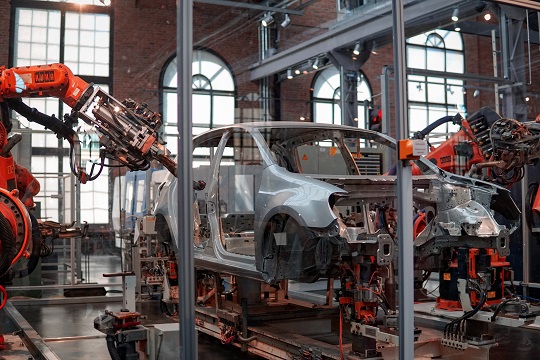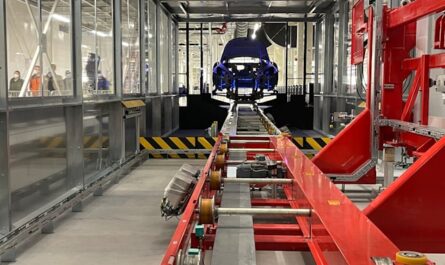Manufacturing plants are essential to the economy of a country. They provide jobs for people and contribute to the production of goods. However, some manufacturing plants experience financial difficulties, resulting in losses that cause them to close their operations.
This situation not only affects the business owners, but also the employees who depend on it for their livelihood.
In this blog post, we will explore the options that a manufacturing plant has when it comes to dealing with unused facilities and employees.
But before we discuss further, make sure you have also joined the scmguide telegram channel so you don’t miss the latest post notifications from this blog and get more insights about other supply chain management topics.
Table of Contents
The situation
A manufacturing plant has been operating for several years, but it has been losing money consistently.
Despite several attempts to turn the business around, the owners have realized that they can no longer keep the business running.
As a result, they have decided to shut down the operations altogether. However, there are several issues that need to be addressed before the plant can be closed.
What to do with the facilities?
One of the main issues that the owners need to deal with is what to do with the facilities.
The plant has a large warehouse and several other facilities that are still in good condition.
The owners have several options available to them.
Firstly, they can sell the facilities to other businesses that may be interested in buying them. This could be an excellent option as the facilities are still in good condition and can be used for other purposes. The money from the sale could also help to offset some of the losses that the owners have incurred.

Secondly, they could rent out the facilities to other businesses. This would be an ideal option if there are businesses in the area that need additional space. However, the owners need to make sure that they are charging a reasonable rent to ensure that they are not losing money in the long run.
Lastly, they could choose to leave the facilities as they are. This option is not ideal, as the facilities will deteriorate over time, and they will become unusable.
You might also like:
- Creating a 5S Culture in the Supply Chain: The Best Way to Improve Productivity and Work Efficiency
- The Importance of Transparency in Supply Chain Audit for Improved Efficiency and Risk Management
What to do with the employees?
Another issue that the owners need to deal with is what to do with the employees.
The employees are the lifeblood of the business, and they are the ones who have been affected the most by the plant’s closure. The owners have several options available to them.
Firstly, they could offer the employees a severance package. This would be a lump sum payment that is intended to help the employees as they transition into a new job. This could help to mitigate the impact of the plant’s closure on the employees.
Secondly, they could offer the employees assistance in finding new jobs. This could include providing them with job leads, helping them create resumes, and offering them training programs to help them develop new skills. This would be an excellent option for the employees who are looking for new jobs.
Lastly, they could offer the employees the opportunity to continue working in the plant until it is closed. This would give the employees time to find new jobs while still earning a salary. However, this option is not ideal, as it could prolong the plant’s closure, and it may not be financially feasible for the owners.
What to do with the equipment?
The final issue that the owners need to deal with is what to do with the equipment. The plant has several pieces of equipment that are still in good condition. The owners have several options available to them.
Firstly, they could sell the equipment to other businesses that may be interested in buying them. This could be an excellent option as the equipment is still in good condition and can be used for other purposes. The money from the sale could also help to offset some of the losses that the owners have incurred.

Secondly, they could rent out the equipment to other businesses. This would be an ideal option if there are businesses in the area that need additional equipment. However, the owners need to make sure that they are charging a reasonable fee to ensure that they are not losing money in the long run.
Lastly, they could choose to keep the equipment as it is. However, this option is not ideal, as the equipment will deteriorate over time, and they will become unusable.
You might also like:
- Navigating Office Politics in Supply Chain Management: Strategies for Success
- The Importance of Business Process Mapping and How to Do It Effectively
How to ensure a smooth closure?
Closing down a manufacturing plant is a complex process that requires careful planning and execution.
The owners need to ensure that they follow the legal requirements for closing down a business and that they communicate the closure to all stakeholders effectively.
Below are some steps that the owners can take to ensure a smooth closure:
- Notify all stakeholders: The owners need to notify all stakeholders, including employees, suppliers, customers, and regulatory bodies, about the closure of the plant.
- Plan for a phased closure: The owners can plan for a phased closure of the plant to minimize the impact on employees and to ensure that customers are not left without products.
- Address legal requirements: The owners need to address all legal requirements for closing down a business, such as tax liabilities, outstanding loans, and employee benefits.
- Communicate with employees: The owners need to communicate with employees about the closure and provide them with information about their severance packages or other options available to them.
- Provide support to employees: The owners can provide support to employees by helping them find new jobs, offering training programs, or providing counseling services.
- Dispose of assets: The owners need to dispose of assets, such as facilities and equipment, in a responsible manner, either by selling or renting them out.
Conclusion
Closing down a manufacturing plant is a difficult decision that can have a significant impact on employees and the local community.
The owners need to carefully consider their options for dealing with unused facilities, employees, and equipment.
By following the steps outlined above, the owners can ensure that the closure of the plant is carried out smoothly and without causing undue harm to the affected parties.
In conclusion, the closure of a manufacturing plant due to years of losses is a challenging situation.
The owners need to make tough decisions about the future of the assets, including facilities, equipment, and employees.
They should evaluate different options, such as selling, renting, or abandoning the assets.
Additionally, they need to consider the legal requirements for closing down a business and communicate effectively with all stakeholders, including employees, suppliers, customers, and regulatory bodies.
It is crucial for the owners to plan for a phased closure and provide support to employees by helping them find new jobs, offering training programs, or providing counseling services.
Finally, disposing of assets responsibly is essential to minimize any negative impact on the environment or the local community.
By following these steps, the closure of the plant can be carried out smoothly and efficiently, and the affected parties can receive fair treatment and support.
Hope it useful!
Also share this article with your colleagues so that they can benefit from it too. Join the scmguide telegram channel so you don’t miss the latest updates from this blog. All articles on this blog are free to use for any purpose, including commercial use, without the need for attribution.

 by
by 

